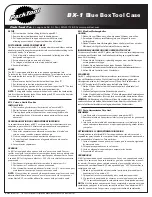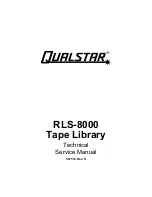
Introduction to the SD Card
SanDisk Secure Digital (SD) Card Product Manual, Rev. 1.9 © 2003 SANDISK CORPORATION
1-5
1.5.4. Endurance
SanDisk SD Cards have an endurance specification for each sector of 100,000 writes typical (reading a logical
sector is unlimited). This far exceeds what is typically required in nearly all applications of SD Cards. For example,
even very heavy use of the SD Card in cellular phones, personal communicators, pagers and voice recorders will
use only a fraction of the total endurance over the typical device’s lifetime. For instance, it would take over 10 years
to wear out an area on the SD Card on which a file of any size (from 512 bytes to maximum capacity) was rewritten
3 times per hour, 8 hours a day, 365 days per year.
With typical applications, the endurance limit is not of any practical concern to the vast majority of users.
1.5.5. Wear Leveling
Wear-leveling is an intrinsic part of the Erase Pooling functionality of SD using NAND memory. The SD Card’s
Wear Level command is supported as a NOP operation to maintain backward compatibility with existing software
utilities.
1.5.6. Using the Erase Command
The Erase (sector or group) command provides the capability to substantially increase the write performance of the
SD Card. Once a sector has been erased using the Erase command, a write to that sector will be much faster. This is
because a normal write operation includes a separate sector erase prior to write.
1.5.7. Automatic Sleep Mode
A unique feature of the SanDisk SD Card (and other SanDisk products) is automatic entrance and exit from sleep
mode. Upon completion of an operation, the SD Card will enter the sleep mode to conserve power if no further
commands are received within 5msec. The host does not have to take any action for this to occur. In most systems,
the SD Card is in sleep mode except when the host is accessing it, thus conserving power.
When the host is ready to access the SD Card and it is in sleep mode, any command issued to the SD Card will
cause it to exit sleep and respond.
1.5.8. Hot Insertion
Support for hot insertion will be required on the host but will be supported through the connector. Connector
manufacturers will provide connectors that have power pins long enough to be powered before contact is made with
the other pins. Please see connector data sheets for more details. This approach is similar to that used in PCMCIA
and MMCA devices to allow for hot insertion.












































